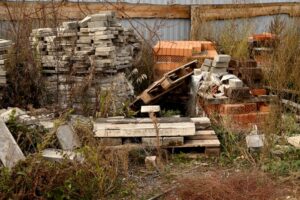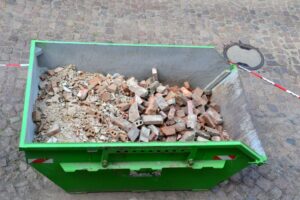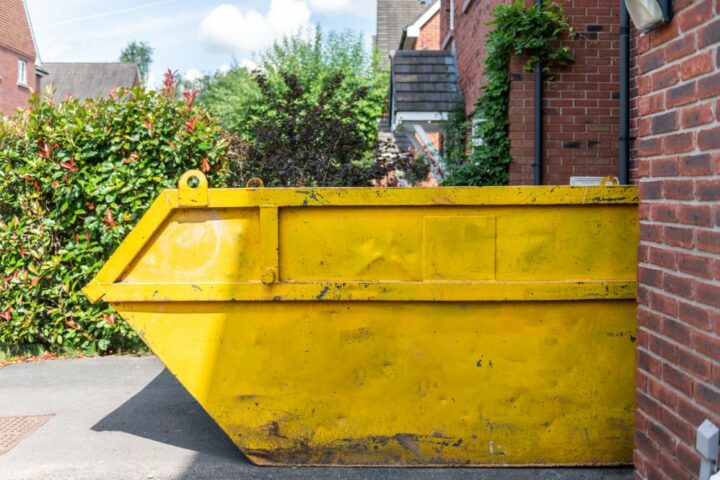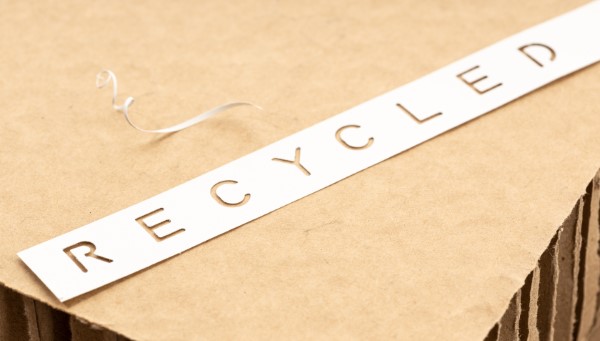In an era where sustainability is paramount, it’s essential to consider how your operations can contribute to lowering CO2 emissions and enhancing resource efficiency. Embracing recycling practices in construction not only aids the environment but also significantly reduces waste disposal expenses.
At Meltononline, our commitment to environmental stewardship is evident in our continuous investment in advanced recycling facilities. We ensure the maximum possible recycling of construction waste. This article serves as your comprehensive guide to understanding the recyclable types of construction waste and the myriad benefits of embracing this practice.
Innovative Recycling on Construction Sites
Statistics reveal a striking reality: 30% of materials delivered to construction sites are wasted. Moreover, global construction waste is projected to reach a staggering 2.2 billion tons by 2025. By adopting effective recycling strategies, you can dramatically decrease landfill contributions and conserve natural resources.
Advantages of Recycling Construction Materials
Recycling in the construction sector brings a host of environmental and economic benefits. Energy conservation and significant reductions in landfill waste are the foremost environmental perks. Economically, recycling can lead to substantial cost savings in waste removal and transportation, while also reducing the need for new resources, thereby cutting production and distribution costs.
Businesses prioritizing construction material recycling gain a competitive edge. Demonstrating a commitment to eco-friendly practices can significantly enhance your appeal to environmentally conscious clients.
Recyclable Construction Materials
Many construction materials are recyclable, some of which may not be immediately obvious.
These include:
- Concrete, Bricks, and Blocks: Recycled for use in concrete aggregate, fill, and road base.
- Wood: Usable for pathways, mulches, animal bedding, and particleboard.
- Glass: Can be transformed into decorative materials, insulation, and ceramics.
- Metals: Repurposed into various items like furniture and fixtures.
- Aggregates: Utilized as a foundation for roads and railroads.
- Plasterboard: Added to composting systems.
- Plastics: Converted into packaging, textiles, and street furniture.
- Floor and Wall Coverings: Repurposed into animal bedding materials.
- Insulation: Transformed into concrete blocks and ceiling tiles.
In today’s environmentally conscious era, the importance of sustainable practices in the construction industry cannot be overstated. As mentioned one of the key elements in this green revolution is the effective management and recycling of construction materials. Among these, wood and timber stand out due to their prevalent use and significant potential for reuse and recycling. Often ordered in surplus for various projects, these materials, if not managed properly, can contribute to environmental degradation.
By focusing on the responsible use and recycling of wood and timber, we can significantly advance towards more sustainable construction methodologies. This not only aligns with global efforts to reduce waste and conserve natural resources but also offers a practical solution to the ever-growing challenge of construction waste management. Let’s delve deeper into the world of wood and timber recycling, understanding where it’s found in construction, how it can be recycled, and the profound environmental benefits of embracing such practices.Wood & Timber
Where can you find it? – The backbone of many construction projects, wood and timber is often ordered in surplus “just in case”, with anything left over classified as waste and trucked away at the end of the build.
How are wood and timber recycled? – Wood and timber leftovers can always be used for future projects. If time stretches too long between relevant builds, you can always recycle your remaining wood and timber or donate to a very grateful charities
Why recycle wood and timber? – Estimates reveal nearly 2 million cubic meters of wood and timber meet the rubbish pile every year. By reducing this number and recycling excess, you’ll be saving trees, saving water and reducing landfill space by at least 238 cubic metres annually.
Incorporating sustainable practices in construction not only benefits the environment but also enhances the efficiency of the industry. Key among these practices is the recycling of commonly used materials such as plasterboard, metals, bricks, and glass.
Plasterboard Recycling – A Sustainable Choice
Plasterboard, commonly found as the primary material for interior walls and ceilings in residential and commercial buildings, has a significant recycling potential. Contractors can repurpose it in various ways, such as for agricultural uses where its nutrient-rich composition benefits garden beds. Moreover, it can be recycled into new plasterboard or paperboard. By choosing services like REGYP, which offers eco-friendly plasterboard recycling, companies can reduce their project costs and help alleviate the burden on landfills. This is crucial because plasterboard, especially types infused with boron, doesn’t decompose easily in landfill conditions due to the lack of sunlight.
Metal Recycling – Turning Waste into Wealth
Metals such as steel, copper pipes, and wire, despite being abundant in landfills, hold considerable value. These materials, often stolen from worksites for their worth, can be efficiently recycled. Copper, a finite and highly durable resource, can be flattened, shredded, and reused without compromising quality. Embracing copper recycling is critical to reduce the environmental impact of mining and its associated waste gases. Notably, studies estimate that two-thirds of the 550 million tonnes of copper mined since 1900 are still in use, underscoring the metal’s longevity and recycling potential.
Brick Recycling – Building a Sustainable Future
Bricks, with a lifespan exceeding 200 years, offer extensive recycling opportunities. They can be reused in various construction projects or crushed for use in road-base, drainage material, or even new bricks. In Australia alone, the construction industry discards 8 million tonnes of bricks into landfills annually. Recycling bricks significantly reduces the need for new mining and quarrying activities and diverts substantial waste from landfills, contributing to considerable energy savings.
Glass Recycling – Clear Benefits for the Environment
Glass, often over-ordered in construction due to breakage risks, is one of the easiest materials to recycle. Efficient glass recycling involves several steps: staff training for safe handling, dedicated storage areas to prevent damage, separate waste collection to avoid contamination, and precise order management to minimize over-ordering. The environmental benefits of recycling glass are immense, including a significant reduction in the energy required for production, and considerable decreases in related air and water pollution.
Each of these recycling practices not only contributes to a more sustainable construction industry but also offers economic benefits, making them a smart choice for forward-thinking businesses. By embracing the recycling of materials like plasterboard, metals, bricks, and glass, businesses position themselves at the forefront of a green revolution in construction. It offers economic benefits, enhances competitive advantage, ensures regulatory compliance, and fosters a positive corporate culture. For forward-thinking businesses, it’s not just a choice but a necessary step towards building a sustainable, profitable, and responsible future.



